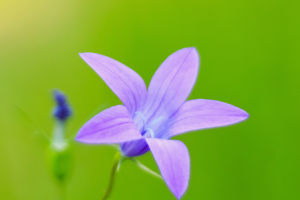The process of plant growth is a fascinating journey from seed to maturity, driven by natural processes and the environment.
Let’s break down the stages of plant growth and the factors that influence them.
The Stages of Plant Growth
1. Germination
The growth of a plant starts with germination, where a seed begins to sprout. For this to happen, the seed needs optimal conditions: water, oxygen, and the right temperature. During germination, the seed absorbs water, causing it to swell and break its outer shell. The embryonic root, or radicle, emerges first, anchoring the plant to the soil. This is followed by the shoot, which will grow upward towards the light.
2. Seedling Stage
Once germination is complete, the plant enters the seedling stage. The young plant develops its first true leaves, which allow it to start photosynthesizing. Photosynthesis is the process by which plants use sunlight to convert carbon dioxide and water into energy. During this stage, the plant is delicate and vulnerable to environmental stressors such as poor light, water shortages, or pests.
3. Vegetative Stage
In the vegetative stage, the plant focuses on growing larger and stronger. The roots extend further into the soil to absorb more nutrients and water, while the stem thickens, and more leaves develop. This stage is crucial for the plant’s health and vigor. Plants in this stage need adequate sunlight, water, and nutrients like nitrogen to support their rapid growth.
4. Flowering Stage
The flowering stage is when the plant begins to produce flowers. For many plants, this is a critical phase, as it’s the precursor to reproduction. Flowers are the reproductive organs of the plant, and they attract pollinators like bees and butterflies. Pollination occurs when pollen from the male part of the flower (anther) is transferred to the female part (stigma), enabling fertilization.
5. Fruiting and Seed Production
After pollination, fertilized flowers develop into fruits, which contain seeds. This stage, called fruiting, is essential for the continuation of the species, as the plant’s main goal is to produce seeds that can grow into new plants. Fruits not only protect the seeds but also aid in their dispersal by attracting animals that eat the fruit and spread the seeds.
6. Maturity and Senescence
Once the plant has completed its reproductive phase, it enters maturity. Some plants may continue to grow and produce fruit for several seasons, while others, like annuals, die after one growing season. Senescence refers to the aging process of the plant, where the leaves may turn yellow, growth slows, and eventually, the plant dies.
Factors Affecting Plant Growth
1. Light
Light is one of the most critical factors for plant growth. Plants need light for photosynthesis, the process by which they create energy. The amount and quality of light can affect the plant’s growth rate, flowering, and overall health. Different plants have varying light requirements.
2. Water
Water is essential for transporting nutrients and maintaining plant structure. It plays a crucial role in photosynthesis and helps regulate the plant’s temperature.
3. Nutrients
Plants require essential nutrients like nitrogen, phosphorus, and potassium to grow. These nutrients are absorbed through the soil and are necessary for various plant functions. Nitrogen promotes leafy growth, phosphorus supports root development and flowering, while potassium strengthens the plant’s resistance to disease.
4. Temperature
Temperature significantly affects plant growth. Most plants have an ideal temperature range in which they grow best.
5. Soil Quality
The type of soil in which a plant grows influences its growth rate and health. Well-draining soil rich in organic matter provides a stable environment for the plant’s roots, allowing them to access water and nutrients effectively.
The Role of Hormones in Plant Growth
1. Auxins
These hormones stimulate cell elongation and are primarily found in the tips of shoots. They are responsible for the plant’s growth toward light (phototropism).
2. Gibberellins
These hormones promote stem elongation, seed germination, and flowering. They play a crucial role in breaking seed dormancy and ensuring plants grow tall and strong.
3. Cytokinins
Cytokinins promote cell division and the growth of lateral buds, which help in the formation of branches. They also delay the aging process in plants.
The process of plant growth is a complex yet beautiful cycle of life, shaped by environmental factors, genetics, and the care they receive. Dear Lykkers, understanding this process allows gardeners and farmers to create optimal conditions for plants to thrive, ensuring healthy growth and maximum yield.


